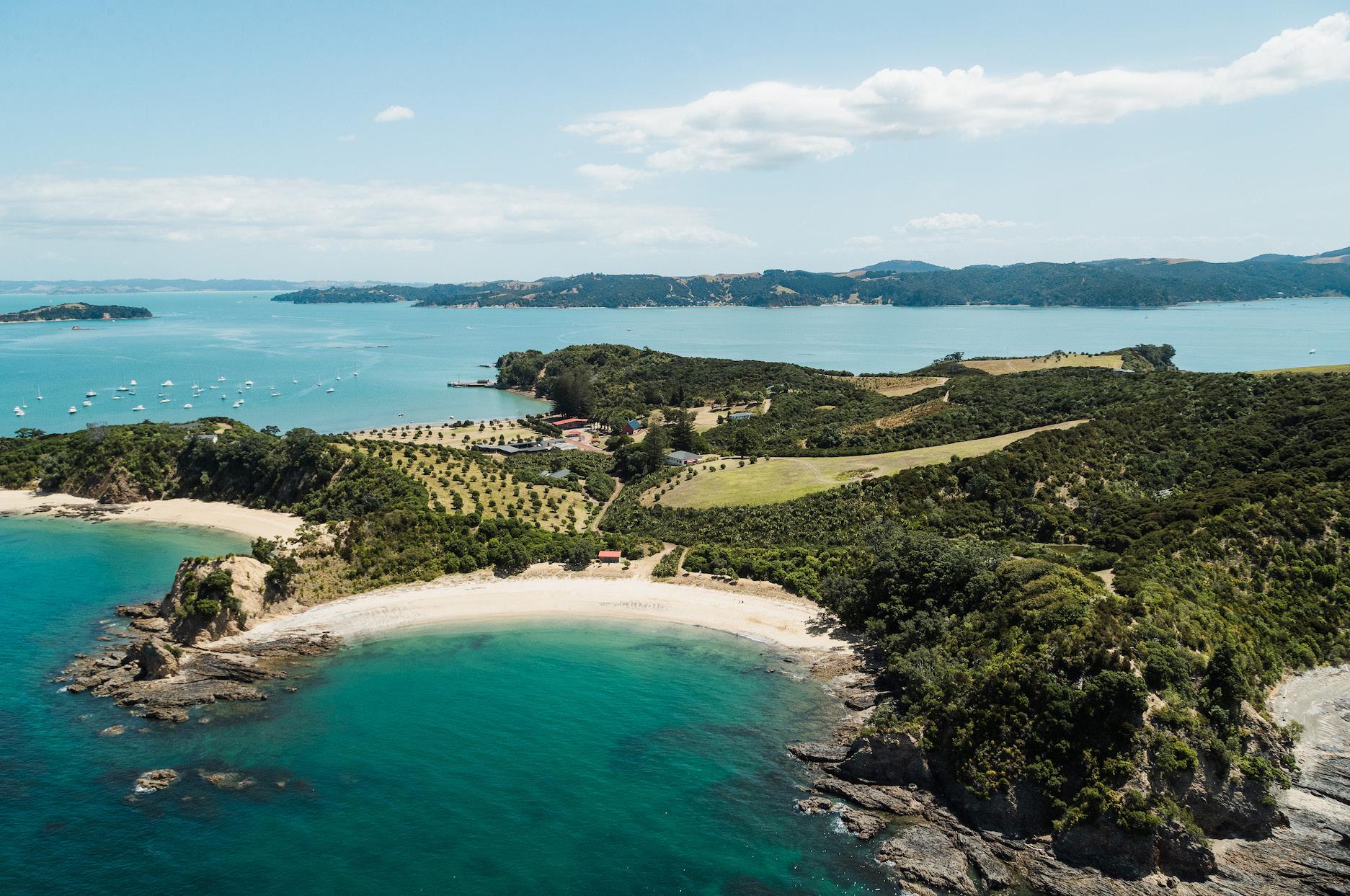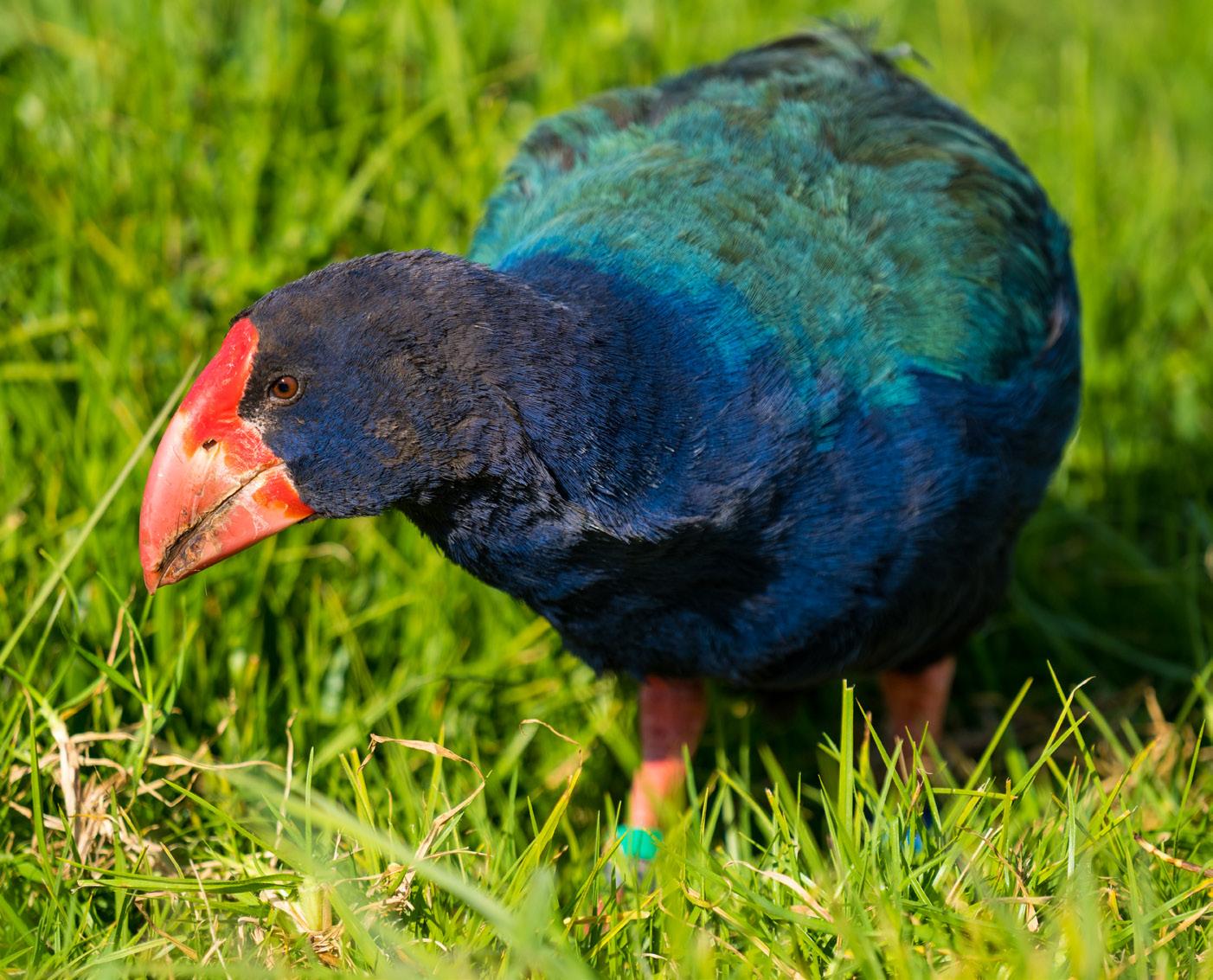
5 minute read
Rotoroa Island Transformations
Following a long history as the site of a Salvation Army addiction treatment facility, Rotoroa Island is today a native tree-covered wildlife sanctuary. David Youngmeyer reports on the transformation of this jewel at the heart of Auckland’s Hauraki Gulf.
In 1907, The Salvation Army began using Pakatoa Island, a small island in the Hauraki Gulf, as an ‘inebriates retreat’. Quickly realising that the 24 hectares of space was going to be too small for future demand, The Salvation Army looked to the neighbouring 82-hectare Rotoroa Island, which was purchased in 1908 for a little over £4012.
By 1911, men who were previously placed on Pakatoa Island were transferred to a new purposebuilt institution on Rotoroa Island. Pakatoa Island continued as a similar facility for women until 1942, with that island being sold in 1949.
Drunkards Act
When Rotoroa Island first opened it was registered as a certified inebriates home under the 1906 Habitual Drunkards Act: in effect, men arrested for drunkenness could be committed under the Act to Rotoroa Island for up to two years.
Up until the 1970s, the rehabilitation programme consisted mainly of work therapy, good nutrition, relaxation, informal counselling and, of course, enforced abstinence from alcohol. After a few weeks of detox, all men were assigned work of some sort, be it as cooks, cleaners, gardeners, or farm hands, doing carpentry, painting or assisting with the boats.
Further history of the island and addiction treatment can be found in Set Free: One Hundred Years of Salvation Army Addiction Treatment in New Zealand 1907–2006 by Majors Don and Joan Hutson (Flag Publications).
End of an era
Almost 100 years of Salvation Army addiction treatment on Rotoroa Island ended in December 2005, with more than 12,000 people having benefitted from the programme. The Bridge rehabilitation services were transferred from the island to the mainland, where they were part of strengthening community-based services.
The decision, notes an article in the War Cry of December 2005, was made after some three years of deliberation by Salvation Army leadership who consulted with experts in the field, both inside The Salvation Army and externally.
The transfer of services off Rotoroa Island coincided with the addition of two new services in the Auckland suburbs of Waitakere and Manukau, with both residential and day programmes. Providing treatment facilities in the community rather than in remote locations reflected an evolution in the philosophy of addiction treatment.
The then-National Manager Addictions and Supportive Accommodation Major Lynette Hutson (now Lt-Colonel) told War Cry in 2005: ‘These new Salvation Army services are located in the hearts of the communities they serve. People previously unable to access addiction services will be able to take advantage of our proximity and the ongoing support we provide.’
Following the closure of addiction services on the island, new uses for this unique environment were progressed.
Transforming the island
The Rotoroa Island Trust was established in 2008, thanks to a generous gift from Annette and Neal Plowman, with the aim of the island being a public sanctuary for everyone to enjoy.
The Trust purchased a 99-year lease from The Salvation Army, and the island underwent a significant transformation before opening to the public in 2011. The Trust is very much a partnership, including among its trustees two Salvation Army representatives.
‘The Rotoroa Island Trust is continuing the island’s special legacy of recovery and renewal; it truly is an island of restoration,’ says Andrew Poole, Chair of the Rotoroa Island Trust.
The restoration work has included the removal of over 20 buildings, and the replacement of more than 20,000 pine trees and macrocarpas with around 400,000 native trees.
A pest-eradication programme was successfully carried out so that today the island is considered predator-free. This has allowed the translocation of a number of endangered species to the island, including two breeding pairs of takahē and the creation of a creche for kiwi chicks.

The creche works by bringing Coromandel brown kiwi chicks to the island when they are about 24 days old, offering a safe place to grow until they are about two years old when they are either translocated to another Hauraki Gulf island or returned to Coromandel. The initiative has improved the kiwi survival rate from five percent to as high as 60 percent. The absence of predators along with the regenerating forest has seen many other bird species make the island their home.
Island open to the public
‘For over 100 years, Rotoroa was offlimits to the public,’ says Jo Ritchie, ecologist and ops manager at the Rotoroa Island Trust.
‘Today it is open to all as a wildlife sanctuary where people can wander at will. Being predator-free means takahē, kiwi, tīeke (saddleback) and other endangered species are thriving; visitors will always see or hear some of these taonga.’
The Trust has also created a museum, which includes the history of the island, restored caretaker cottages into holiday home accommodation and converted the former superintendent’s house into affordable shared accommodation. The island is also a popular location for retreats, conferences and teambuilding activities.
Visiting the island
Rotoroa Island is open every day, whether for a day trip or an overnight stay.
Transport to the island is by Fullers360 Ferry, water taxi or private boat.
Visitors can explore the many walking tracks, see the wildlife, swim at the stunning safe beaches, visit the chapel and discover the island’s fascinating history in the small museum.
Guided walks with an island ranger are a wonderful 90-minute introduction before heading off to explore.
For more information, visit the Rotoroa Island Trust website: rotoroa.org.nz and ferry bookings: fullers.co.nz










